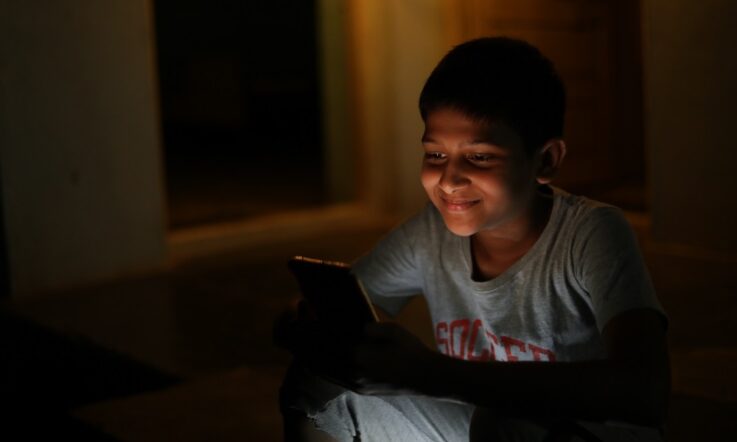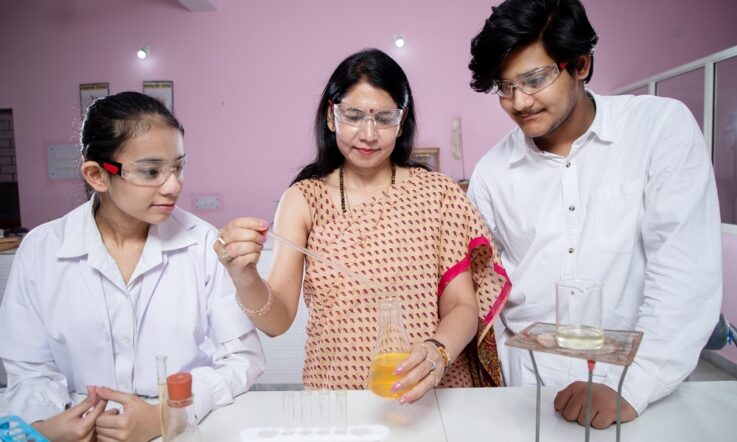As a teacher, you will be familiar with questions ‘why am I learning this?’ and ‘when will I use it?’. Giving students a practical, hands-on challenge is a great opportunity for them to demonstrate what they can do and the progress they have made, while gaining an appreciation of the relevance and wider application of the knowledge and skills they’ve learned.
DRV DAV Centenary Public School, Phillaur is in the Doaba region of Punjab. Principal Yogesh Gambhir says the school is located on nine acres of land, but staff are committed to breaking down the semi-urban stereotypes and providing its 2,200 students with a global perspective on learning and the many opportunities and pathways that exist. ‘Education in our school is a holistic learning experience, helping each child to develop the qualities of head, heart and hand which make them self-reliant,’ he tells Teacher.
Since 2015 the Commerce Department has run a program called ‘Earning While Learning – Shaping Future Entrepreneurs’. The aim is to challenge Class 12 students to plan their own business, develop their skills and knowledge in this area and fulfil social responsibility, all through integrating practical, hands-on experiences with classroom teaching.
‘Theoretical knowledge and practical knowledge are two sides of the same coin. Both are important … hence, under this program, students get the opportunity to bring into practice the theoretical knowledge of Business Studies, Accountancy, Marketing and Economics,’ the school leader explains.
Students work in teams of 10-12 to draw up a business plan for a stall – this includes surveying potential customers in the local community to assess demand and preferences, calculating production costs and other expenditure, deciding on a profit margin and pricing structure to achieve their goals, and coming up with a name and tagline for their stall.
They sell their products at a one-day event at school which is open to students from Class 6 to 11, teachers and nearby schools. If these new entrepreneurs are to meet and exceed their business goals and attract visitors to their stall, they’ll need to take into account potential competitors, materials and suppliers, and strike a balance between quantity, quality and consumer demand.
An important part of the program is ethics and social responsibility – students need to use ethical business, sales and marketing techniques; they also nominate a cause to receive a donation from any profits made. The business plan is presented to teachers and is put into action once approved.
‘Students have a Day Book to maintain their accounts such as purchasing, other overheads and sales and to calculate the profit,’ Principal Gambhir says. ‘They apply various marketing skills to attract their customers – they prepare attractive posters regarding their stall, use dramatic skills and present entertaining advertisements and try hard to convince their customers. All this is done without violating any code of conduct of business.’
He adds, at the end of the day students calculate their profits and ‘relish the first moment of their earning. Now, as a responsible entrepreneur, they donate their hard-earned profit selflessly to an NGO or underprivileged community’.
An important part of the task is evaluating their performance – celebrating the successes and considering areas for improvement. Trophies and certificates are also awarded, with assessment criteria bringing together the four elements of advertising, presentation, business proposal and profit-making.
Principal Gambhir says the activity has a great impact on the students who participate, but also has a positive effect on other areas of the school community. ‘The students [are able] to plan a business, to execute the business plan, to apply different business and marketing strategies and to calculate the profit of their business.
‘Not only do Class 12 students get benefit out of this activity, but Class 11 students are also prepared and inspired to outshine their peers in the same venture the next year. Parents, teachers and judges from other institutions all appreciate the activity and are happy to see the children learning things by doing, managing everything on their own, and learning business ethics and humanity.’
How often do you provide students with opportunities to put their skills and knowledge into practice and demonstrate the progress they have made?
At this school, students take on a real-world challenge. With a colleague, think about how you could introduce a real-world learning activity to your own classroom or school. Would you need any external expertise?



